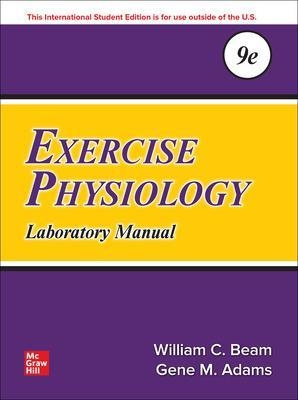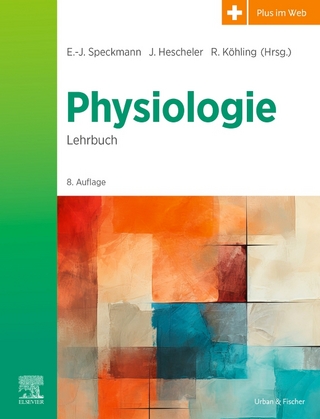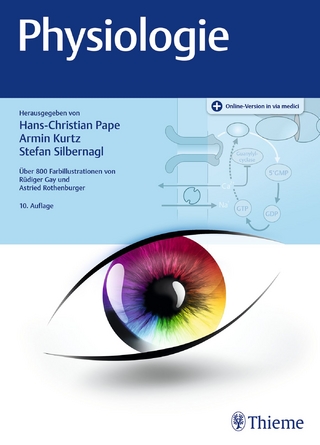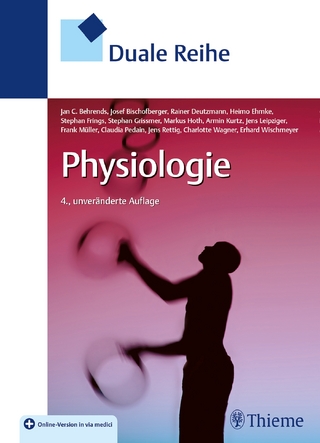
Exercise Physiology Laboratory Manual ISE
McGraw-Hill Education (Verlag)
978-1-265-21336-7 (ISBN)
Dr. Beam was born and raised in Orrville, Ohio. While in high school, he competed in football, wrestling and golf and played trumpet in the jazz band that toured the U.S. and Europe. He received his B.S. in biology from the College of Wooster, a small liberal arts college in Ohio. During his undergraduate study, he spent one summer in Vienna, Austria studying art history and German. He completed his graduate work and obtained his Ph.D. in exercise physiology from The Ohio State University. While a graduate assistant at Ohio State, he was responsible for performance testing of all the athletes including football, basketball, baseball, swimming, ice hockey and more. It was a wonderful experience working with so many talented collegiate, Olympic and future professional athletes. Dr. Beam joined the faculty at Cal State Fullerton in 1983 and the following year began directing the Exercise Physiology Lab and the Physical Performance Program. Under Dr. Beam's guidance, over fifty graduate students have completed their master's degrees and most are now active in the community working and teaching within the fitness/wellness profession. He also previously served as President of the Southwest regional chapter of the American College of Sports Medicine (SWACSM), and as the regional chapter representative to the ACSM Regional Chapters Committee. Bill currently lives in Placentia, California with his wife Terri, who teaches Chemistry at Mt. San Antonio College, and their two children Danny and Sara. Bill has commuted primarily by bicycle during his time at CSUF and enjoys cycling, jogging, swimming and playing sports with the family. Dr. Gene Adams is Faculty Emeritus of Kinesiology and Health Science at California State University at Fullerton.
TABLE OF CONTENTS
Preface
PART I ORIENTATION TO MEASUREMENT IN EXERCISE PHYSIOLOGY
CHAPTER 1 INTRODUCTION AND TERMINOLOGY
CHAPTER 2 UNITS OF MEASURE
CHAPTER 3 COLLECTION OF BASIC DATA
PART II MUSCULAR STRENGTH
CHAPTER 4 ISOTONIC (DYNAMIC) STRENGTH
CHAPTER 5 ISOMETRIC (STATIC) STRENGTH
CHAPTER 6 ISOKINETIC STRENGTH
PART III ANAEROBIC FITNESS
CHAPTER 7 SPRINTING—“HORIZONTAL POWER”
CHAPTER 8 JUMPING—VERTICAL POWER
CHAPTER 9 ANAEROBIC CYCLING
CHAPTER 10 ANAEROBIC STEPPING
CHAPTER 11 ANAEROBIC TREADMILL RUNNING
PART IV AEROBIC FITNESS
CHAPTER 12 AEROBIC RUNNING, JOGGING, AND WALKING
CHAPTER 13 AEROBIC STEPPING
CHAPTER 14 AEROBIC CYCLING
CHAPTER 15 MAXIMAL OXYGEN CONSUMPTION
PART V CARDIOVASCULAR FUNCTION
CHAPTER 16 RESTING BLOOD PRESSURE
CHAPTER 17 EXERCISE BLOOD PRESSURE
CHAPTER 18 RESTING ELECTROCARDIOGRAM
CHAPTER 19 EXERCISE ELECTROCARDIOGRAM
PART VI RESPIRATORY FUNCTION
CHAPTER 20 RESTING LUNG VOLUMES
CHAPTER 21 EXERCISE VENTILATION
PART VII FLEXIBILITY
CHAPTER 22 FLEXIBILITY
PART VIII BODY COMPOSITION
CHAPTER 23 BODY MASS INDEX
CHAPTER 24 GIRTHS AND RATIOS
CHAPTER 25 SKINFOLDS
CHAPTER 26 HYDROSTATIC WEIGHING
APPENDIX A 2021 PAR-Q+
APPENDIX B Exercise Risk Assessment
APPENDIX C Informed Consent
APPENDIX D Metric Conversions
Index
| Erscheinungsdatum | 27.04.2022 |
|---|---|
| Zusatzinfo | 99 Illustrations |
| Verlagsort | OH |
| Sprache | englisch |
| Gewicht | 651 g |
| Themenwelt | Studium ► 1. Studienabschnitt (Vorklinik) ► Physiologie |
| Sozialwissenschaften ► Soziologie | |
| ISBN-10 | 1-265-21336-4 / 1265213364 |
| ISBN-13 | 978-1-265-21336-7 / 9781265213367 |
| Zustand | Neuware |
| Informationen gemäß Produktsicherheitsverordnung (GPSR) | |
| Haben Sie eine Frage zum Produkt? |
aus dem Bereich


